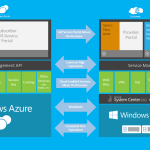Microsoft just released System Center 2012 R2 Update Rollup 6, which includes a lot of new features and fixes. With this Update Rollup 6 Microsoft now supports SQL Server 2014 as databases for the System Center and Windows Azure Pack components.
Components that are fixed in this update rollup
- Data Protection Manager (KB3030574)
- Option to keep online backup data while deleting a protection group
- Support for SQL Server 2014 as DPMDB
- Operations Manager (KB3051169)
- Service Manager (KB3039363)
- Service Provider Foundation (KB3050307)
- Service Reporting (KB3050321)
- Virtual Machine Manager (KB3050317)
- Add Azure Subscription feature
- Improved E2A ASR protection scenario
- Option to use Generation 2 VMs in Services and VMRoles
- Total Networking Usage Exposure rules in Management Pack
- Option to overcommit Cloud and Host Group capacity for Replica VMs
- Windows Azure Pack (KB3051166)
- Adds support for Webjobs in Windows Azure Pack Websites.
- Adds support for Deployment Slots in Windows Azure Pack Websites.
- Adds support for Virtual Machine Checkpoint.
- Adds support to maintain Data Consistency between the SQL Resource Provider configured properties for resources with the actual provisioned resources on the SQL Server Hosting server.
- Compatibility with the next version of Windows Server
- Fixes several SQL Server Resource Provider issues
- Windows Azure Pack Web Sites (KB3051142)
I already posted some information on the Update Rollup 6 for Windows Azure Pack and System Center Virtual Machine Manager. I also want to highlight a change which was made in several different components in System Center and Windows Azure Pack. With UR6 you are now able to track Total Networking Usage Exposure rules in Management Pack. This change introduces two rules that target Hyper-V Hosts:
- Total Incoming VNic Network traffic collection rule
- Total Outgoing VNic Network traffic collection rule
These rules measure the total incoming and total outgoing traffic in Kilo Bytes per VNic per virtual machine in the following method:
For each VM:
- Enable Hyper-V Metering if it is not enabled.
- Run Measure-VM.
- Collect metering data for every remote address of “0.0.0.0/0” or “::/0” per VNic.
By default, these rules run every hour. Users may opt to override this setting by overriding the IntervalSeconds property. These rules should not be run more frequently than every five minutes (300 seconds).
Behavior in previous versions: VMM did not measure data consumption. It measured only throughput.
Tags: Cloud, DPM, Hyper-V, Microsoft, SCOM, System Center, System Center 2012 R2, Update Rollup, Update Rollup 6, UR6, VMM, WAP, Windows Azure Pack, Windows Server Last modified: April 29, 2015











